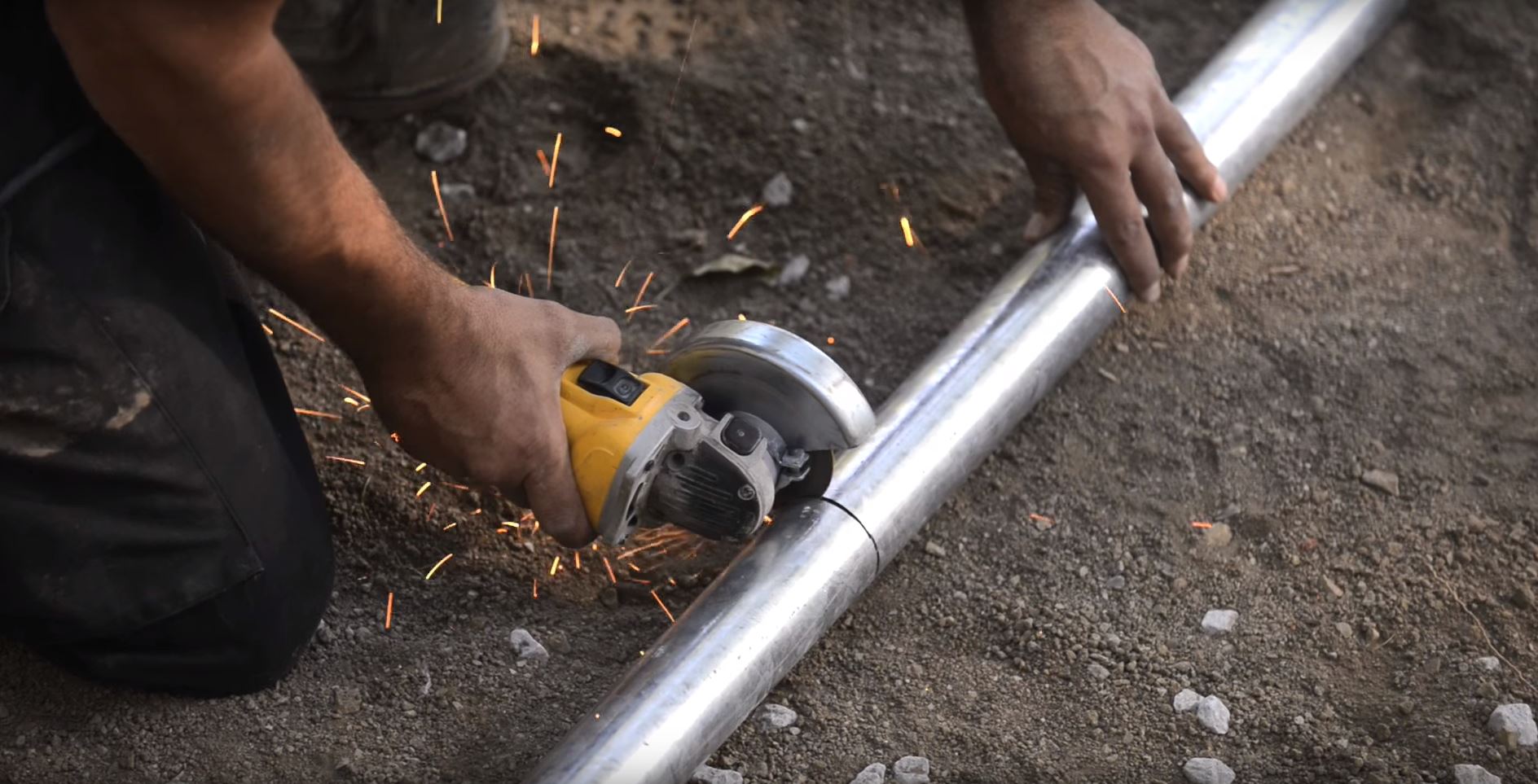Paver Pete shows step by step how to build a fence wall.
For this project, the homeowners wanted us to build a privacy noise barrier wall.
Here how we constructed it.
STEP 1: Perform a bench cut excavation for the wall.
STEP 2: Amend and compact the subgrade
There’s a lot of options for compaction equipment in a trench like this for a retaining wall.
We typically use a jumping jack or point rammer type compactor, which is what we chose for this application.
For the densely graded stone of the fence post foundation, we will step up to a reversible vibratory plate that is equipped with a compaction sensor.

STEP 3: Cut posts for the fence post foundation and set them into the earth.
They are 2 ½ inch galvanized pipes. They should be set just below the top of base or bottom of the block.
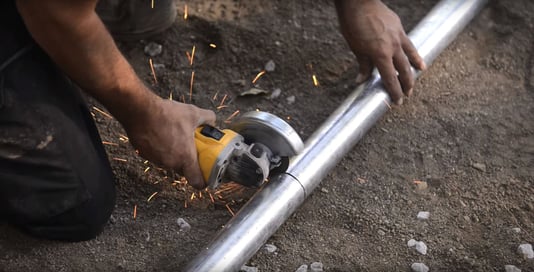
STEP 5: Fill the posts with concrete and epoxy coated #3 rebar.
STEP 6: Add a piece of geotextile around the fence post foundation and tension it. Keep an overlap of a foot.
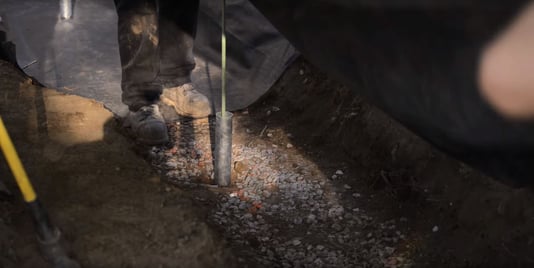
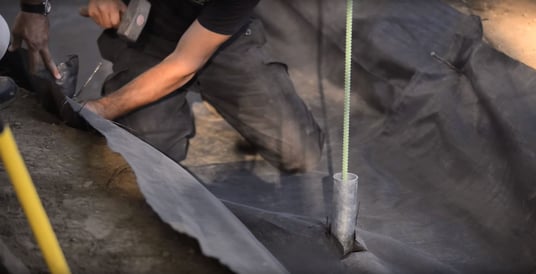
The engineer we consulted specified an 8-inch base. We will go to a foot.
STEP 7: Complete the base with densely graded stone and compact it to 98% standard Proctor density.
STEP 8: Add type S mortar mix to fill the cavity where the rebar is and secure it by consolidating it with grout.
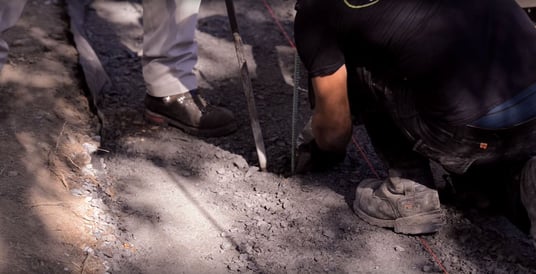
STEP 9: Build the base course.
We used our Raffinato wall blocks.
It’s a 7 inch by 3 ½ inch system with a patented Techo-Bloc clip system. The clips are packaged with the blocks.
We just need to slide the clip down through a slot and it will pick up the channel of the layer below it.
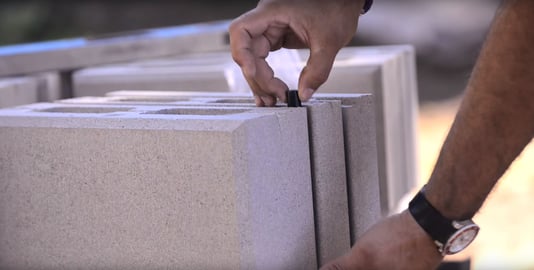
STEP 10: Grout fill the lower course with type S mortar mix through the cores of the units.
Following our engineer's spec, the cores of this Raffinato block are usually filled with #57 stone but here we are grouting it with type S mortar mix.
Since it’s a lakefront property, we have high wind situations, so our engineer recommended to grout fill the second course too. The wall will be safer this way.
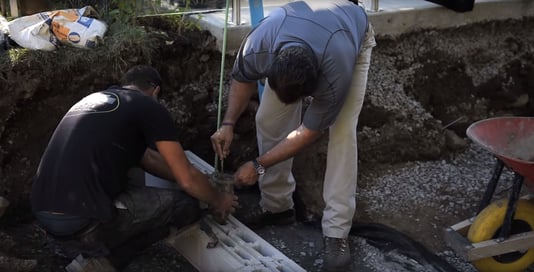
STEP 11: Add a second course of block and grout it.
The next courses should be filled with 3/4-inch clean ASTM #57 stones, because we don't want the mortar to reach out and stain the wall down the road.
STEP 12: Backfill the base course with densely graded stone and compact it to 95% standard Proctor density. This embedment adds stability.

STEP 13: Install a pipe for drainage purposes. Make sure to have a positive gravity flow of water all the way down to a T-box, and eventually evacuating into the environment.
STEP 14: Encapsulate the pipe completely with 4 inches of clean stone.
The water that will travel through the permeable pavement will settle, fill into the pipe and then out into the environment.
STEP 15: Add grade stakes and string lines. The intersection of these string lines should represent finished graded base.
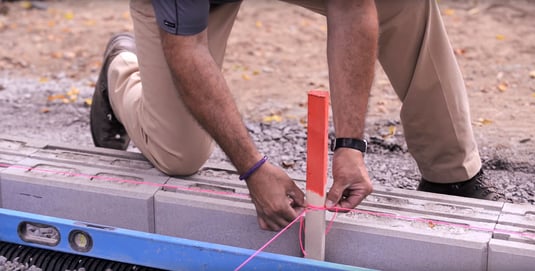
STEP 16: Fine tune the base and screed the bedding layer.
Trick of the trade: Using a PVC edge restraint typically used in interlocking pavement on the outside of our wall will help resist any erosion and scour in the low-lying area.
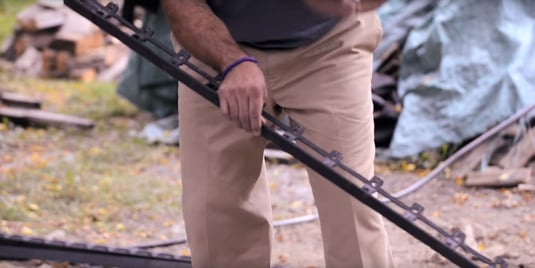
STEP 17: Add the next courses of blocks up to 4 ½ feet and adhere them together. Here we used a Flexlock Ultra adhesive. Core fill them with ¾ inch clean stone.
The Raffinato wall has an overall height of 5 ½ feet.
STEP 18: Cut the rebars, core fill the last course and cap it.
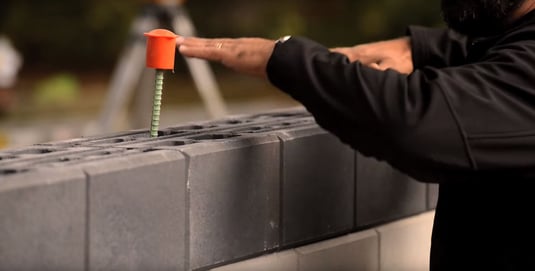
BUILDING A WALL THAT NEEDS REINFORCEMENT, BUT CAN'T FIND WHAT YOU NEED IN THE TECHO-SPEC GUIDE?
CHECK OUT OUR

